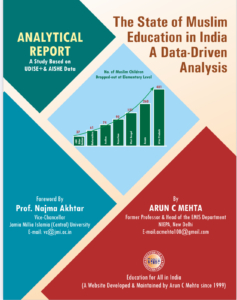Can AI-Powered Face Recognition Attendance System Transform Indian Colleges and Beyond?
In a significant leap toward modernizing educational administration, Devi Ahilya Vishwavidyalaya’s Institute of Engineering & Technology (IET) in Indore has secured a patent for an innovative AI-powered face recognition attendance system. Titled “A System and Method for Taking Attendance in Educational or Professional Settings,” this technology promises to streamline attendance processes, reduce faculty workload, and extend its applications beyond classrooms. Led by Dr. Vaibhav Neema and a team of recently graduated students, the system took two years to develop and was patented under The Patents Act, 1970. But can this system be replicated across India’s colleges, particularly in rural and challenging areas? What are its benefits, challenges, and costs, and should it extend to schools? Let’s explore.
How the System Works
The system is elegantly simple yet powerful. Through a web-based interface, users – typically faculty – upload single or multiple classroom images captured via smartphones or basic cameras. Advanced machine learning algorithms then identify faces, match them against a pre-registered database, and generate a real-time attendance report, such as an Excel sheet marking students as present or absent. The developers claim the system is highly reliable, with facial recognition data remaining accurate for up to 10 years without frequent updates. Requiring no high-end hardware, it integrates seamlessly with everyday digital devices, making it scalable and eco-friendly.
Feasibility of Replication in Indian Colleges
With approximately 45,000–52,000 colleges across India, replicating this system – or developing similar ones using existing facial recognition tools – is feasible but requires strategic planning. Urban colleges, with better internet and device access, are well-positioned to adopt it. However, rural colleges and those in difficult areas (e.g., Northeast India or Kashmir) face significant hurdles due to limited infrastructure. Only 18–29% of rural educational institutions have reliable internet, and just 17% of rural students have access to internet-enabled devices. Frequent power outages and logistical challenges further complicate adoption in remote regions. A phased approach, supported by initiatives like BharatNet for broadband expansion, could bridge these gaps, starting with urban and semi-urban colleges before scaling to rural ones.
Benefits: Efficiency and Beyond
The system offers transformative benefits for educational institutions:
- Time-Saving and Efficiency: By automating attendance, it eliminates the 10–15 minutes per class spent on manual roll calls, particularly in large Indian classrooms with 50–100+ students. This allows faculty to focus on teaching, research, or student mentoring, potentially reducing administrative workload by 20–30%.
- Accuracy and Transparency: It minimizes errors like proxy attendance and ensures fairness in tracking, especially in overcrowded lecture halls or exam centers.
- Data Insights: Real-time reports enable analytics on attendance patterns, helping identify at-risk students or optimize schedules.
- Scalability: Its low-tech requirements make it adaptable to various settings, from colleges to hospitals, corporate offices, or even transport systems (e.g., detecting ticketless travellers on trains like Vande Bharat).
- Economic and Environmental Gains: By reducing paper use and manual labour, it offers long-term savings – and aligns with Digital India’s push for sustainable, tech-driven solutions.
Challenges and Concerns
Despite its promise, the system faces significant challenges:
- Privacy Risks: Collecting biometric data raises concerns about data breaches, surveillance overreach, or misuse, potentially eroding trust among students and faculty. Compliance with India’s Digital Personal Data Protection (DPDP) Act is critical.
- Accuracy Limitations: Performance may falter under poor lighting, varied angles, or facial changes (e.g., masks or beards). Algorithmic biases could also reduce accuracy for India’s diverse ethnicities, risking inequity.
- Infrastructure Gaps: Rural colleges lack reliable internet, electricity, and devices, necessitating significant investments in connectivity and hardware.
- Technical Dependency: System failures or lack of technical expertise for setup and maintenance could disrupt operations.
- Ethical and Legal Hurdles: Some countries have restricted facial recognition in schools due to privacy concerns, and India may face similar debates, particularly for minors.
Infrastructure Requirements
The system’s low-tech design is a key strength. It requires:
- Hardware: Basic smartphones, webcams, or cameras for capturing images, plus a computer or tablet for uploads.
- Software and Connectivity: A web-based platform and secure database (cloud-based like AWS or local servers) for storing facial data, plus stable internet for real-time processing.
- Power: Reliable electricity to operate devices.
While urban colleges often have this infrastructure, rural institutions would need upgrades, potentially costing huge amount nationally to enhance connectivity and device access.
Cost of Nationwide Implementation
Implementing the system across India’s 45,000–52,000 colleges would be a massive undertaking. Assuming an average initial setup cost of $10,000 per college (factoring in bulk licensing and customization), the total upfront investment could range from $450–520 million. Annual maintenance, estimated at $2,000 per college, would add $90–104 million yearly. These figures could vary based on economies of scale, government subsidies (e.g., through UGC or AICTE), or public-private partnerships. Additional costs for rural infrastructure upgrades would further increase the budget. Funding could be sourced from schemes like Samagra Shiksha or corporate social responsibility (CSR) initiatives, but careful policy planning is needed to avoid straining institutional budgets.
Reducing Faculty Burden
The system significantly lightens the administrative load on faculty. Manual roll calls in large classes are time-consuming and prone to errors. By simply uploading a photo, faculty can generate instant attendance reports, saving hours weekly. This efficiency not only frees up time for core academic tasks but also reduces follow-ups on discrepancies, as accurate records are readily available. For India’s overworked educators, this could be a game-changer, enhancing productivity and job satisfaction.
Should Schools Adopt It?
Extending the system to schools could streamline attendance and foster digital literacy, particularly in urban government schools with large student populations. It could also help address truancy by providing real-time data for interventions. However, schools face unique challenges:
- Privacy Concerns for Minors: Biometric data collection for children raises ethical issues, requiring parental consent and strict data protection measures.
- Infrastructure Barriers: Rural schools have even less access to internet and devices than colleges, with only 18% connected.
- Psychological Impact: Constant monitoring could create a sense of surveillance, affecting student well-being.
Given these concerns, school adoption should start with pilot programs in well-equipped urban areas, accompanied by child-friendly regulations and robust privacy frameworks.
The Way Forward
AI-powered attendance system is a promising step toward modernizing education in India. Its ability to save time, reduce costs, and enhance transparency makes it a compelling solution for colleges, with potential applications in other sectors. However, successful replication requires addressing infrastructure gaps, privacy concerns, and algorithmic biases, particularly in rural and challenging areas. A phased rollout, supported by government initiatives and ethical guidelines, could ensure equitable access and maximize impact. For schools, cautious adoption with strong safeguards is advisable. As India advances toward a tech-driven future, this innovation could pave the way for smarter, more efficient educational systems – if implemented thoughtfully.
Source: Analysis in present article is primarily based on Economic Times Education, August 23, 2025


